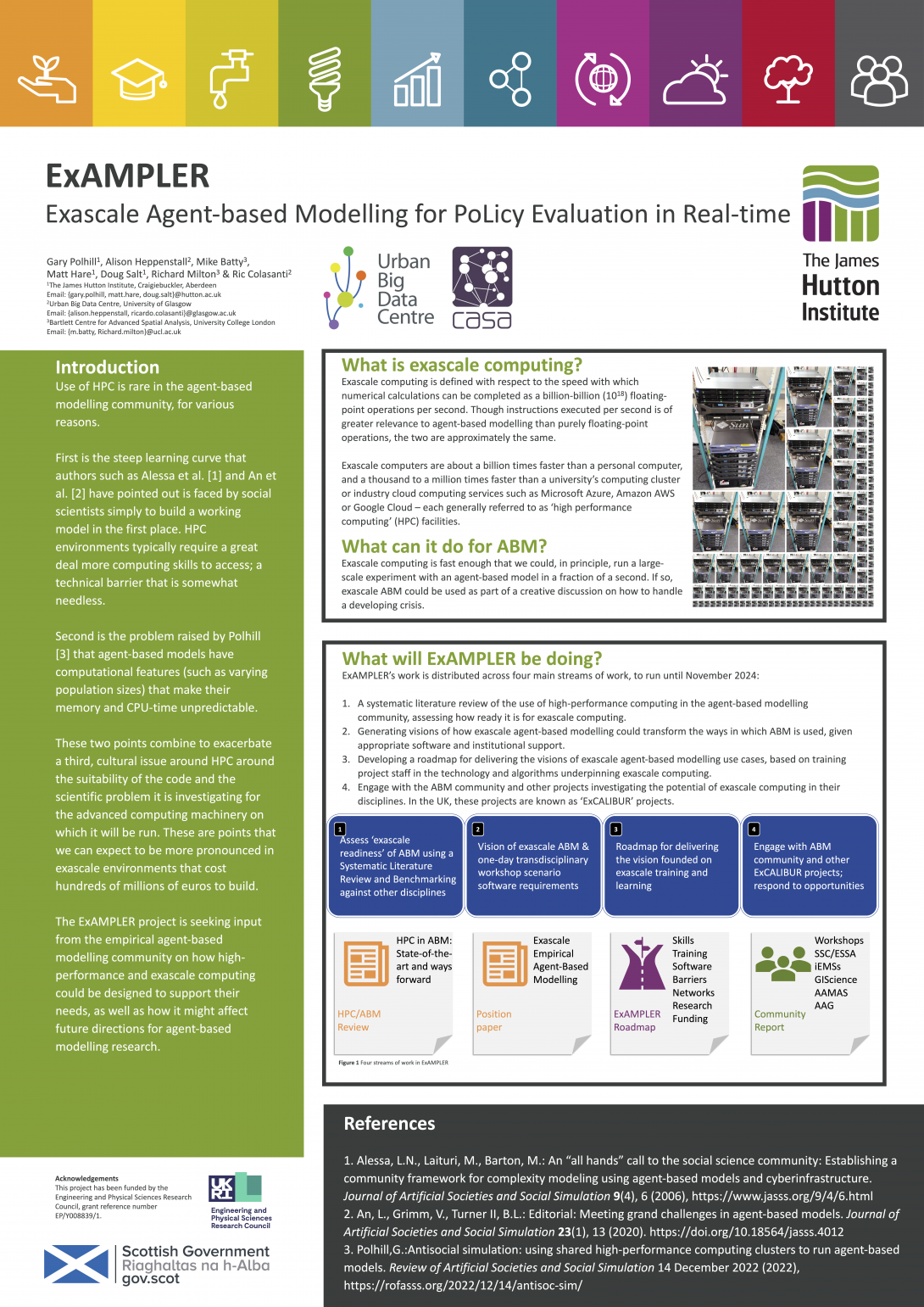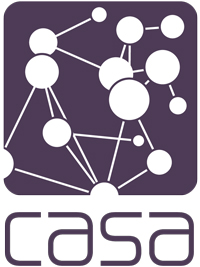
Poster presented to the Social Simulation Conference, Glasgow, September 2023
Introduction
Use of HPC is rare in the agent-based modelling community, for various reasons.
First is the steep learning curve that authors such as Alessa et al. [1] and An et al. [2] have pointed out is faced by social scientists simply to build a working model in the first place. HPC environments typically require a great deal more computing skills to access; a technical barrier that is somewhat needless.
Second is the problem raised by Polhill [3] that agent-based models have computational features (such as varying population sizes) that make their memory and CPU-time unpredictable.
These two points combine to exacerbate a third, cultural issue around HPC around the suitability of the code and the scientific problem it is investigating for the advanced computing machinery on which it will be run. These are points that we can expect to be more pronounced in exascale environments that cost hundreds of millions of euros to build.
The ExAMPLER project is seeking input from the empirical agent-based modelling community on how high- performance and exascale computing could be designed to support their needs, as well as how it might affect future directions for agent-based modelling research.
What is exascale computing?
Exascale computing is defined with respect to the speed with which numerical calculations can be completed as a billion-billion (1018) floating-point operations per second. Though instructions executed per second is of greater relevance to agent-based modelling than purely floating-point operations, the two are approximately the same.
Exascale computers are about a billion times faster than a personal computer, and a thousand to a million times faster than a university’s computing cluster or industry cloud computing services such as Microsoft Azure, Amazon AWS or Google Cloud – each generally referred to as ‘high performance computing’ (HPC) facilities.
What can it do for ABM?
Exascale computing is fast enough that we could, in principle, run a large-scale experiment with an agent-based model in a fraction of a second. If so, exascale ABM could be used as part of a creative discussion on how to handle a developing crisis.
What will ExAMPLER be doing?
ExAMPLER’s work is distributed across four main streams of work, to run until November 2024:
- A systematic literature review of the use of high-performance computing in the agent-based modelling community, assessing how ready it is for exascale computing.
- Generating visions of how exascale agent-based modelling could transform the ways in which ABM is used, given appropriate software and institutional support.
- Developing a roadmap for delivering the visions of exascale agent-based modelling use cases, based on training project staff in the technology and algorithms underpinning exascale computing.
- Engage with the ABM community and other projects investigating the potential of exascale computing in their disciplines. In the UK, these projects are known as ‘ExCALIBUR’ projects.
References
[1] Alessa, L.N., Laituri, M., Barton, M.: An “all hands” call to the social science community: Establishing a community framework for complexity modeling using agent-based models and cyberinfrastructure. Journal of Artificial Societies and Social Simulation 9(4), 6 (2006), https://www.jasss.org/9/4/6.html
[2] An, L., Grimm, V., Turner II, B.L.: Editorial: Meeting grand challenges in agent-based models. Journal of Artificial Societies and Social Simulation 23(1), 13 (2020). https://doi.org/10.18564/jasss.4012
[3] Polhill,G.:Antisocial simulation: using shared high-performance computing clusters to run agent-based models. Review of Artificial Societies and Social Simulation 14 December 2022 (2022), https://rofasss.org/2022/12/14/antisoc-sim/




